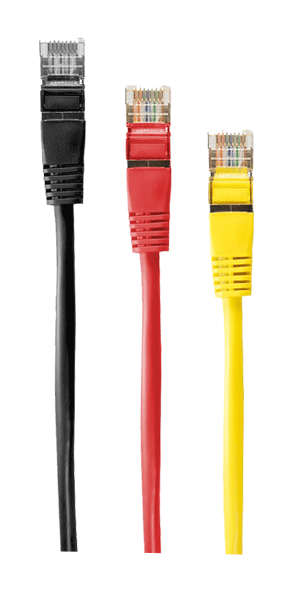Leased lines have been around since the telegraph was invented. Today, they’re a bit faster. Typical leased lines for business range from 1.5 Mbps on the low end to 10 Gbps and even 100 Gbps on the high end. Let’s look at what leased lines are and how they differ from your typical broadband connection.
 Leased From Whom?
Leased From Whom?You know how it works when you lease a property. You sign a lease document and typically pay monthly for the duration of the lease. For that, you have exclusive use of the office or other building space. It’s similar with leased lines.
The simplest leased line is a pair of twisted copper wires that connect to a demarcation point in your facility to your service provider or through the local incumbent telephone company. For historical reasons, the ILECs, as they are called, own all the copper telco lines. After industry deregulation, other competitive service providers were able to lease these line and then sublease them to you.
The telco may provide the entire line service or just the “last mile” connection to your place. In any case, that’s invisible to you. You’ll get one bill from your service provider that covers the entire line service regardless of how far it stretches.
Dedicated Leased Lines
Leased lines can provide telephone services, Internet access or Wide Area Network (WAN) connections. A single copper pair gives you landline phone service. A multi-pair bundle gives you multiple phone lines. Once you order more than a few lines, it is more cost effective to install a single digital line that supports up to 23 simultaneous calls. That service is called ISDN PRI.
Regardless of the number of lines you need, they are all what is called dedicated lines. That means they are for your use exclusively. Many decades ago, there weren’t enough phone lines to go around and they were shared in an arrangement called a “party line.” The real party often involved snooping on your neighbor’s phone conversations.
Party lines are pretty much relegated to history, although many Internet services have a similar connectivity. You and others in your area share the broadband bandwidth. Typically, you can’t see what your neighbor is doing, but you can feel the effects of the line speeding up and slowing down with the varying traffic. These are shared services versus dedicated.
Dedicated Leased Data Lines
More business activity is now done with computers than telephones. Every business needs some type of digital connection for credit card transactions, Web sites, online order processing, purchasing and inventory, accounting, customer service and so on. You’ll need leased lines for interconnecting your various business locations and for connecting to the Internet
The T1 leased line was popular for decades. It was the first high speed dedicated digital connection available for business and runs at a blazing 1.5 Mbps. That’s pretty slow by today's standards, but it still useful for smaller operations. An advantage of T1 is that it runs on ordinary phone lines and can be installed virtually everywhere.
The next step up traditionally has been to the DS3 or T3 line at 45 Mbps. Above that is SONET fiber optic service at 155 Mbps and above.
These legacy dedicated lines are still in service, but are rapidly being replaced by Carrier Ethernet that better matches the needs of today’s networks. Ethernet over Copper handles the low end from about 1 to 20 Mbps. Ethernet over Fiber is far more capable and is available from 10 Mbps to 10 Gbps in most locations and 100 Gbps in some areas.
Dedicated Internet Connections
The Internet itself is a shared resource, which is its great advantage. You can connect with just about everyone, everywhere. It’s your connection to the Internet where you have a choice. You can use a dedicated Internet connection or a shared bandwidth connection.
How to choose? The shared bandwidth connections are what you find in cable broadband, cellular broadband, and satellite broadband services. Consumers and many small businesses opt for this arrangement as it offers the lowest costs.
In addition to sharing the bandwidth on a providers circuit, which causes variations in performance, shared services are also typically asymmetrical. That means the download speed is many times the upload speed. That’s good for watching video streaming or reading web pages, but not so good for sharing or backing up large files, or some business processes in the cloud.
Dedicated lines are usually symmetrical with upload and download speeds identical. They also have rock solid bandwidth that is strictly for your use. If the line is getting congested, then you need to increase your bandwidth because it's all your traffic. A further advantage of many dedicated lines is that they come with a Service Level Agreement that guarantees a level of availability and time to repair, should anything go wrong.
Do you need new WAN bandwidth services or help deciding the best options for your business? Check out the myriad of dedicated and shared bandwidth services available for your particular location.

